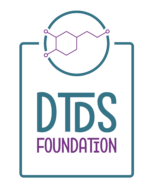About Dopamine Transporter Deficiency Syndrome
Dopamine Transporter Deficiency Syndrome (DTDS) is a rare movement disorder, often affecting children, that causes progressive dystonia and parkinsonism. These children present with very severe and disabling motor symptoms, appearing from early infancy and worsening throughout childhood. DTDS is caused by genetic changes in the SLC6A3 gene leading to the deficit of the neurotransmitter Dopamine Transporter (DAT). DAT is a protein that regulates the homeostasis of dopamine in the central nervous system and modulates motor control. Inheritance is autosomal recessive, meaning that the child inherits one copy of a mutated gene from each parent. Both genders are equally affected and it is frequently misdiagnosed as cerebral palsey. At present, no effective treatments are available for this disorder.
Other Names
- DAT Deficiency
- DTDS
- Infantile Parkinsonism-dystonia
- PKDYS
- Parkinsonism-dystonia infantile
- SLC6A3-Related Dopamine Transporter Deficiency Syndrome
Definition of Symptoms:
Parkinsonism develops as the disorder progresses and is characterized by tremor (shaking), slowed movements (bradykinesia), rigidity (stiffness), and impaired balance and coordination.
Dystonia is an abnormally increased muscular tone that causes fixed abnormal postures. There is a slow, intermittent twisting motion that leads to exaggerated turning and posture of the extremities and trunk. It is characterized by uncontrollable (involuntary), long-lasting muscle contractions and cramps that involve many different muscles. Dystonia causes difficulty with daily activities and impairs the ability to talk, eat, drink, pick up objects, and walk.
Bradykinesia refers to slowness in the execution of movement
Hypokinesia refers to slowness in the initiation of movement
Oculogyric crisis is abnormal eye movement with blepharospasm, periorbital twitches, and protracted fixed staring episodes. There may be a maximal upward deviation of the eyes in the sustained fashion. Oculogyric crisis can be triggered by a number of factors including neuroleptic medications.
Hypotonia is abnormally low, floppy, muscle tone. Patients with DTDS often have hypotonia affecting the trunk and core muscles.
Hypertonia is increased muscle tone of arm or leg, also referred to as spasticity or rigidity of muscles. Patients with DTDS often have hypertonia in their limbs, so that arms or legs, for example, are stiff and difficult to move.
Chorea (Greek for ‘dance’) refers to widespread arrhythmic involuntary movements of a forcible, jerky and restless fashion. It is a random-appearing sequence of one or more discrete involuntary movements or movement fragments. Movements appear random because of variability in timing, duration or location. Each movement may have a distinct start and end. However, movements may be strung together and thus may appear to flow randomly from one muscle group to another. Chorea can involve the trunk, neck, face, tongue, and extremities.
Global Developmental Delay is a delay in the achievement of motor or mental milestones in the domains of development of a child, including motor skills, speech and language, cognitive skills, and social and emotional skills. This term should only be used to describe children younger than five years of age.
Additional symptoms that may be present include absent speech, reduced facial expressions, irritability, sleeping problems, digestive problems (such as reflux or constipation), and recurrent pneumonia which can be life-threatening.


